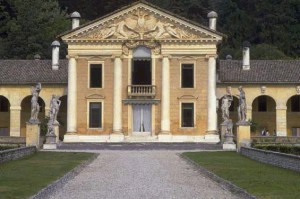 Migration of architects and mutual exchange of architectural ideas were not new in Early Modern Europe and existed also in previous centuries. For a better understanding of renaissance architecture as an international phenomenon, the contribution of migrating Italian artists (sculptors and building masters) is essential. Undeniable, in many European countries Italian artists played a most crucial role in the development of architecture and the reception of the all’antica architectural grammar. Nevertheless, common art history still clutches at the idea that Italy was the only centre of a ‘true’ Renaissance architecture which was disseminated over Europe exclusively by travelling Italian architects. Now, more than 50 years after the series of L’opera del genio italiano all’estero, it will be most welcome to come back to the subject of migrating architects in early modern Europe, with a fresh point of view and defusing the ideological minefield inherent in the ‘geography of art’.
Migration of architects and mutual exchange of architectural ideas were not new in Early Modern Europe and existed also in previous centuries. For a better understanding of renaissance architecture as an international phenomenon, the contribution of migrating Italian artists (sculptors and building masters) is essential. Undeniable, in many European countries Italian artists played a most crucial role in the development of architecture and the reception of the all’antica architectural grammar. Nevertheless, common art history still clutches at the idea that Italy was the only centre of a ‘true’ Renaissance architecture which was disseminated over Europe exclusively by travelling Italian architects. Now, more than 50 years after the series of L’opera del genio italiano all’estero, it will be most welcome to come back to the subject of migrating architects in early modern Europe, with a fresh point of view and defusing the ideological minefield inherent in the ‘geography of art’.
The notion of exchange between various cultural centres is by far the most useful to understand the routes and lines of mutual artistic relations and assimilations in early modern Europe. Therefore the scope of this colloquium is not limited to migration from and to Italy. Foreign activities of and travels of building masters from other parts of Europe will also be addressed. Together we hope to contribute some parts of the even more complex jigsaw puzzle of architectural exchange in early modern Europe, where along side the Italians also migrating masters from the Low Countries, the German countries, France, Britain and others finally should regain their place in history.
In this conference various sets of questions will be addressed, first about the travelling building masters. For instance, what were the conditions underscoring a building master’s decision to migrate ? Did he receive a princely invitation, or was he embarking on a commercial enterprise ? Was he associated with a well-functioning family network already established abroad? Did other factors such as religious persecution, crisis, and war influence his decision ? Secondly one may ask how an immigrant building master actually functioned abroad. What was his position in his new homeland and what was his support network ? What was the building master’s relationship to the trade in materials used for architecture and sculpture, both local and international? To what degree were the architectural models from home adapted to local circumstances, including adjustments that accounted for local building materials, climate, and social habits ? Finally there are questions concerning the commissioners and their networks. Who were the patrons, the agents, brokers, and ‘cultural intermediaries’? What other ways could the patrons have attained their goals ? What role did the patrons’ network play ?
Institut Universitaire Néerlandais d’Histoire de l’art
Viale Torricelli, 5
Florence
PROGRAMME
18 janvier 2013
NB : 30 minute lectures + 10 minutes discussion after each paper
9.00 Michael Kwakkelstein (director NIKI), Welcome
9.15 Konrad Ottenheym (Utrecht University), Introduction : Roving Renaissances.
9.30 Merlijn Hurx (Utrecht University), ‘Wandering architects. Travelling as part of an architect’s education in the 15th C.’
10.10 Javier Ibáñez Fernández (Univ. d. Zaragoza), ‘Le radici settentrionali del rinnovamento dell’ultimo gotico nella Penisola Iberica.’
10.50 coffee
11.20 Federica Rossi (SNS Pisa), ‘L’arte italiana e la migrazione artistica in Russia nel XV secolo.’
12.00 Howard Burns (SNS Pisa/ CISA Palladio), ‘Migrating amateurs, migrating architecture ? Marcantonio Barbaro, friend of Palladio, ambassador to France (1561-64) and Constantinople (1568–74).’
12.40 Krista De Jonge (Leuven University), ‘The Contribution of Italian Artists to Renaissance Architecture in the Low Countries.’
13.30 lunch break
14.30 Barbara Arciszewska (Warsaw Univ.), ‘Architectural Crossroads: Migration of architects and building trade professionals in Early Modern Poland 1500-1700.’
15.10 Konrad Ottenheym (Utrecht University), ‘Netherlandish architects and building masters in Central and Northern Europe c.1550-1650.’
15.50 short break
16.00 Franek Skibiński (Nicolaus Copernicus Univ. of Toruń), ‘Meeting in the East. Networks of Italian and Netherlandish sculptors in Poland-Lithuania 1550-1650.’
16.40 Mario Bevilacqua (Univ. d. Firenze), ‘17th Century architectural exchange between Italy and other European countries through travels, books and prints.’
17.20 closing remarks
17.30 refreshments

Leave a Reply
You must be logged in to post a comment.